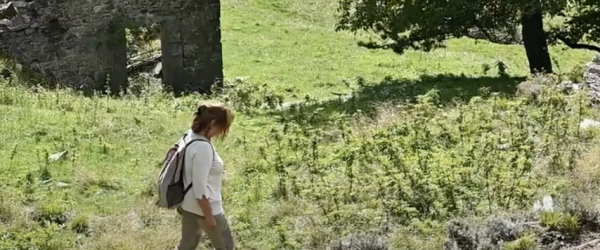There are places that do not need words: you just have to set out to understand their beauty. Appennino Emilia is one of these, a land that reveals itself step by step, between silences that speak and horizons that open up like pages of an ancient book.
Following a path here does not only mean trekking but venturing on a journey into landscapes that change with the seasons: the ridges that in spring are dressed in flowers, the beech woods that in summer offer shade and coolness, the chestnut groves that in autumn smell of wood and fruit, the peaks that in winter are covered with snow. Every step becomes an experience and an opportunity to feel the breath of the mountain.
Along the paths it happens to meet stone villages suspended in time, Romanesque churches that guard centuries-old secrets, mills that tell of patient and daily work. They are discreet but alive traces, which recall the deep bond between these mountains and those who lived there.
Some itineraries seem to be made on purpose to restore a sense of belonging. From Parma’s Lago Santo you can climb towards Monte Marmagna, where the view sweeps from the Po Valley to the Tyrrhenian Sea. The climb to Monte Cusna, the great mountain of the Reggio Emilia Apennines, gives the emotion of a panorama that remains etched in the memory.
Alongside the nature trails, the Apennines hold the great Historical Paths. The Via Francigena, traveled for centuries by pilgrims on their way to Rome, crosses the Cisa Pass and brings with it stories of faith, exchanges and encounters. The Via degli Abati, which connected Pavia to Pontremoli, tells the spirituality and courage of the monks who walked it, today loved by those looking for an authentic and less traveled experience. The Via Matildica del Volto Santo, which recalls the figure of Matilda of Canossa and guides walkers through castles, parish churches and landscapes that have made history. The Via di Linari was instead an alternative route to the Via Matildica that started from Fidenza passing through Parma and reaching Tuscany via the Lagastrello Pass. We also find the Alta Via dei Parchi which encompasses all the paths and pilgrimage routes of Emilia-Romagna in 27 stages through which you can admire the beauty of the natural parks. The Ducati Trail connects Emilia-Romagna to Liguria, passing through valleys of great naturalistic interest through itineraries that can be traveled on foot, by MTB and Gravel. The Way of St. Columbanus passes through the places visited by the saint himself and in the crypt of the abbey of the same name in Bobbio you can visit his remains.
Walking along these paths is a way to get in touch with centuries of history and with the collective memory of a territory that has always lived of passages, encounters and borders to cross, leaving room to listen to the rustle of the leaves, the water flowing between the rocks, one’s thoughts that finally find a new harmony.
At the end of each route, the feeling of authenticity remains, because Appennino Emilia is not only a destination for hikers but an invitation to rediscover a deep contact with nature, history and oneself.
Look at the Environmental Hiking Guides of the Terme & Outdoor network on Visit Emilia
Visit the Serial Walkers blog
IAT offices of reference:





